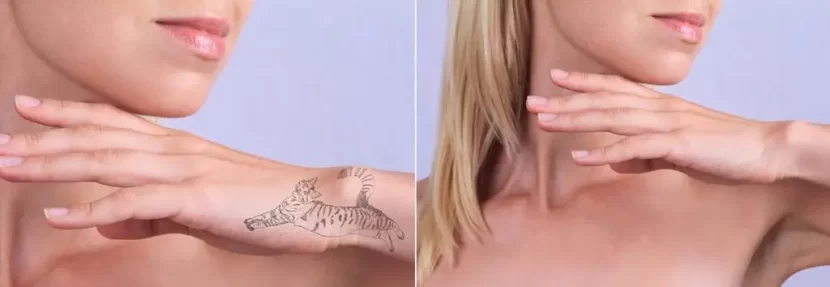Laser tattoo removal is a popular method for getting rid of unwanted tattoos. The process involves using laser technology to break down the tattoo pigment, allowing the body to naturally eliminate it over time. However, the healing process after laser tattoo removal can vary from person to person. This article will provide some tips on how to speed up the healing process and ensure the best possible results.
Proper aftercare
One of the key factors in speeding up the healing process is proper aftercare. After getting a laser tattoo removal treatment, it is important to follow the instructions provided by the healthcare professional or tattoo removal specialist. This may include keeping the treated area clean and dry, applying ointments or creams as recommended, and avoiding exposure to sunlight or excessive sweating.
1. Keep the area clean and dry
It is essential to keep the treated area clean to prevent infection. Gently wash the area with mild soap and water, and pat dry using a clean towel. Avoid scrubbing or rubbing the area, as it may cause irritation. Additionally, it is important to keep the area dry to prevent moisture-related complications.
2. Follow the recommended ointment/cream application
After a laser tattoo removal treatment, the healthcare professional may prescribe or recommend specific ointments or creams to apply to the treated area. These products can help soothe the skin, reduce redness and inflammation, and promote healing. It is important to follow the instructions on how often to apply the ointment/cream and for how long.
3. Protect the treated area from sunlight
UV radiation from the sun can delay the healing process and cause complications. It is crucial to protect the treated area from direct sunlight by covering it with clothing or using a broad-spectrum sunscreen with a high SPF. This will help prevent sunburn and ensure faster healing.
Avoid irritants
Avoiding irritants can also contribute to faster healing after laser tattoo removal. Irritants can include harsh chemicals, fragrances, and certain cosmetics. These substances can irritate the skin and prolong the healing process. It is recommended to use mild, fragrance-free products on the treated area until it has fully healed.
Healthy lifestyle
A healthy lifestyle can support the healing process after laser tattoo removal. This includes eating a balanced diet rich in vitamins and minerals to provide the body with the necessary nutrients for healing. Staying hydrated by drinking enough water is also important for overall skin health and faster healing.
1. Consume foods rich in antioxidants
Foods rich in antioxidants, such as berries, leafy greens, and nuts, can help promote skin health and healing. Antioxidants neutralize harmful free radicals in the body, reducing inflammation and promoting tissue repair.
2. Avoid smoking and excessive alcohol consumption
Smoking and excessive alcohol consumption can negatively impact the healing process. They can slow down circulation, impair the immune system, and hinder the body’s ability to repair itself. It is recommended to quit smoking and limit alcohol intake during the healing period.
Patience is key
Lastly, it is important to remember that everyone’s body heals at its own pace. The speed of healing after laser tattoo removal can vary depending on factors such as the tattoo size, location, color, and individual health. It is essential to be patient and follow the aftercare instructions diligently to achieve the best results.
Speeding up the healing process after laser tattoo removal involves proper aftercare, avoiding irritants, and maintaining a healthy lifestyle. By following these guidelines and being patient, individuals can help ensure a faster and successful healing process, resulting in the desired outcome of tattoo removal.
